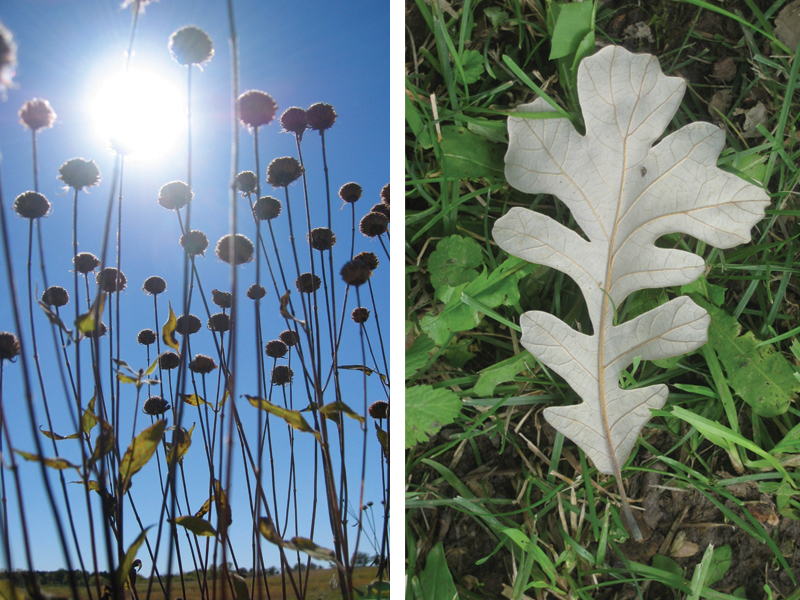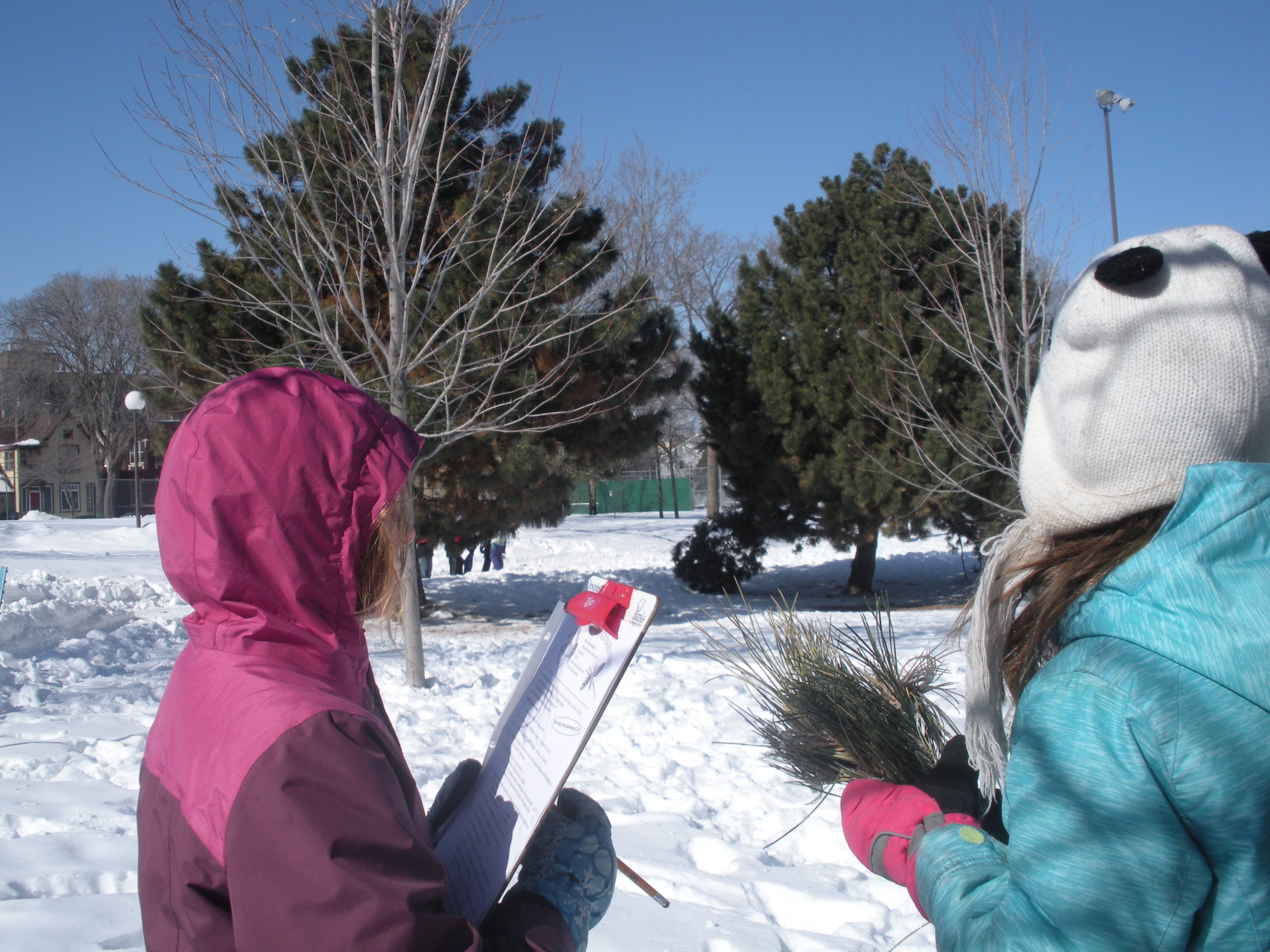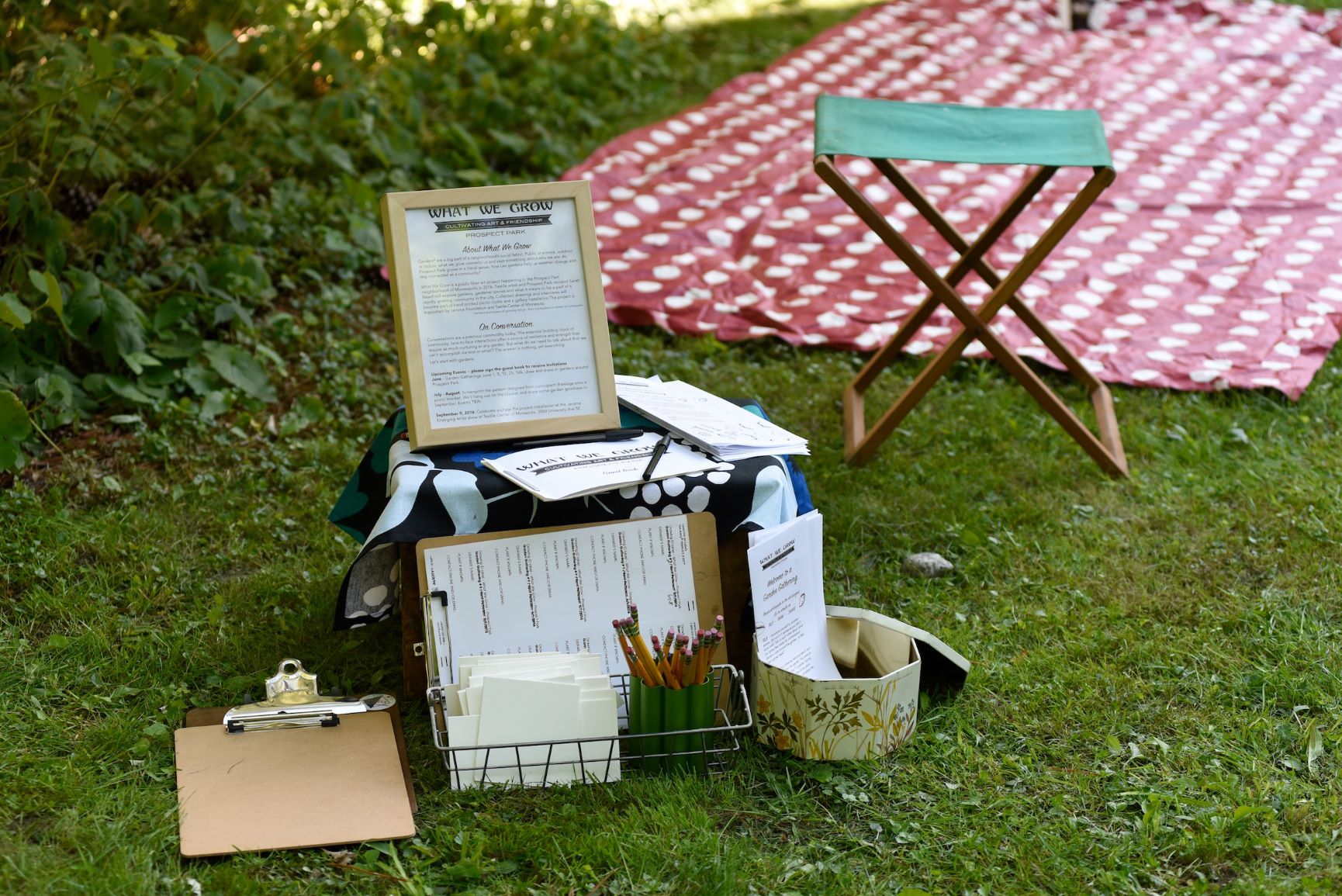Plants, A Key to Creativity
Textile designer, public artist, and field botanist Sarah Nassif traverses the overlap between her work in urban forestry and socially engaged art, facilitating transformative encounters with plants and inspiring the public to notice nature everywhere.

When you look closely at the edge of a leaf or touch a patch of squishy moss after it rains, you are activating an ancient set of circuits in the brain that connects to feelings of happiness and creativity. Human beings co-evolved with the plant world. As a result, our five senses are attuned to the shapes and patterns, sounds, textures, smells and tastes of plants. Our senses are just like muscles: They can atrophy through disuse. Likewise, the more we use them, the stronger they get. When botanists spend a lot of time in the field, we say you develop “botany eyes,” an (almost) superpower to notice plants.
Artists and scientists alike work to observe, record, and share what they perceive in the world. As both an artist and a scientist, my five senses are my most important tools. The senses are gatekeepers of creativity, designed to help us absorb information about the world around us. Neurologists are discovering how screen time causes sensory overload by working certain parts of the brain to the point of exhaustion, and how, by contrast, plants can relieve attention fatigue, calm us, and increase our creativity. As an artist, I want to connect people with plants to help revive these senses, rekindle a sense of personal agency, and spark new conversations about the places we live and take care of.
When I chose to major in botany at the University of Washington, I set the course for becoming an artist, though I didn’t know it at the time. My studies took me from Oregon’s old growth forests to the bogs of Ireland, places where I became absorbed with the drama of the plant world. I learned about the clever ways plants work together. For instance, plants partner with fungi to vastly expand their water uptake capacity, rather than generating a bunch of biologically expensive biomass. This same system has other functions, too, like working as a sort of neural network whereby trees communicate with one another through their roots and fungal extensions. For me, botany is a search for similarities and differences, repetition of patterns, and ingenious relationships that we as humans ought to learn from.

As a botany student, I loved the minutiae of plant classification and Latin names. But as an artist, my goal is to highlight stories of the plant world and reveal how vitally connected people are to plants. I share my enthusiasm for the plant world through creative experiences that inspire new ways of looking at nature we encounter daily: street trees, parking lot shrubs, or the vegetables we buy at the grocery store.
The trees you pass by in the city can be just as transformative as the ones we enjoy in a national park. I learned this right out of college, in my job as an urban forester for a suburb of Seattle. I was tasked with encouraging the public to appreciate (rather than resent) the city’s expansive tree canopy. That included taking residents out to conduct tree surveys, measuring and identifying Douglas firs and big leaf maples. I designed a field guide to the suburb’s tree canopy and put real forestry tools in the hands of participants.Though I didn’t recognize it at the time, this project was my first socially engaged art project. Participants enjoyed learning key identifying characteristics—shapes of leaves, fragrances of needles, bark textures—of the trees that surrounded them. This connected them personally to the vital role these trees play in the city: controlling stormwater runoff, absorbing carbon from the atmosphere, and even improving mental health. I never forgot how facilitating others to experience plants through their five senses sparked new conversations about trees in the city.

Twenty years later, I embarked on a public art project in the Twin Cities that drew directly from my experience as an urban forester. The Other Green Line Field Book invites the public to document and draw urban nature along the Green Line train that connects Minneapolis and Saint Paul, through a free pocket field guide that reimagines train stops as trailheads. On eight walks through landscapes along the route, participants follow prompts to observe, record and share what they see and connect to what these places might have looked like 1890. Other projects using this method followed: What We Grow explores neighborhood gardens and relationships, and Shared Ingredients celebrates the herbs, fruits, and vegetables found in the cuisines of St. Paul’s East Side. All of these projects are driven by a core belief: that connecting with plants allows us to meaningfully connect with one another and with the places we live.
As we grapple with the rapid environmental and social changes brought about by climate disruption, it is critical that we keep our senses sharp and form person-to-person networks. We must be confident in our creativity—it’s the key tool that will help us survive. This year, my motto is, “Notice Nature Everywhere”. Plants may be our wisest companions going into the anthropocene—helping us stay calm, make connections, and tap our own creativity—but only if we notice them.
This article is part of the series Seeing Plants: Vision and Botany in Contemporary Art, guest edited by Regan Golden.